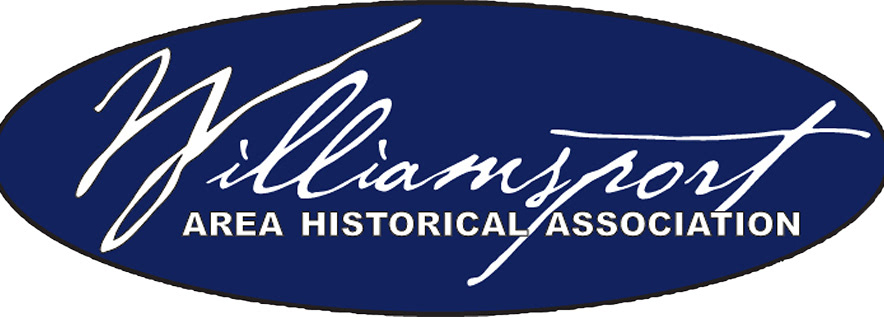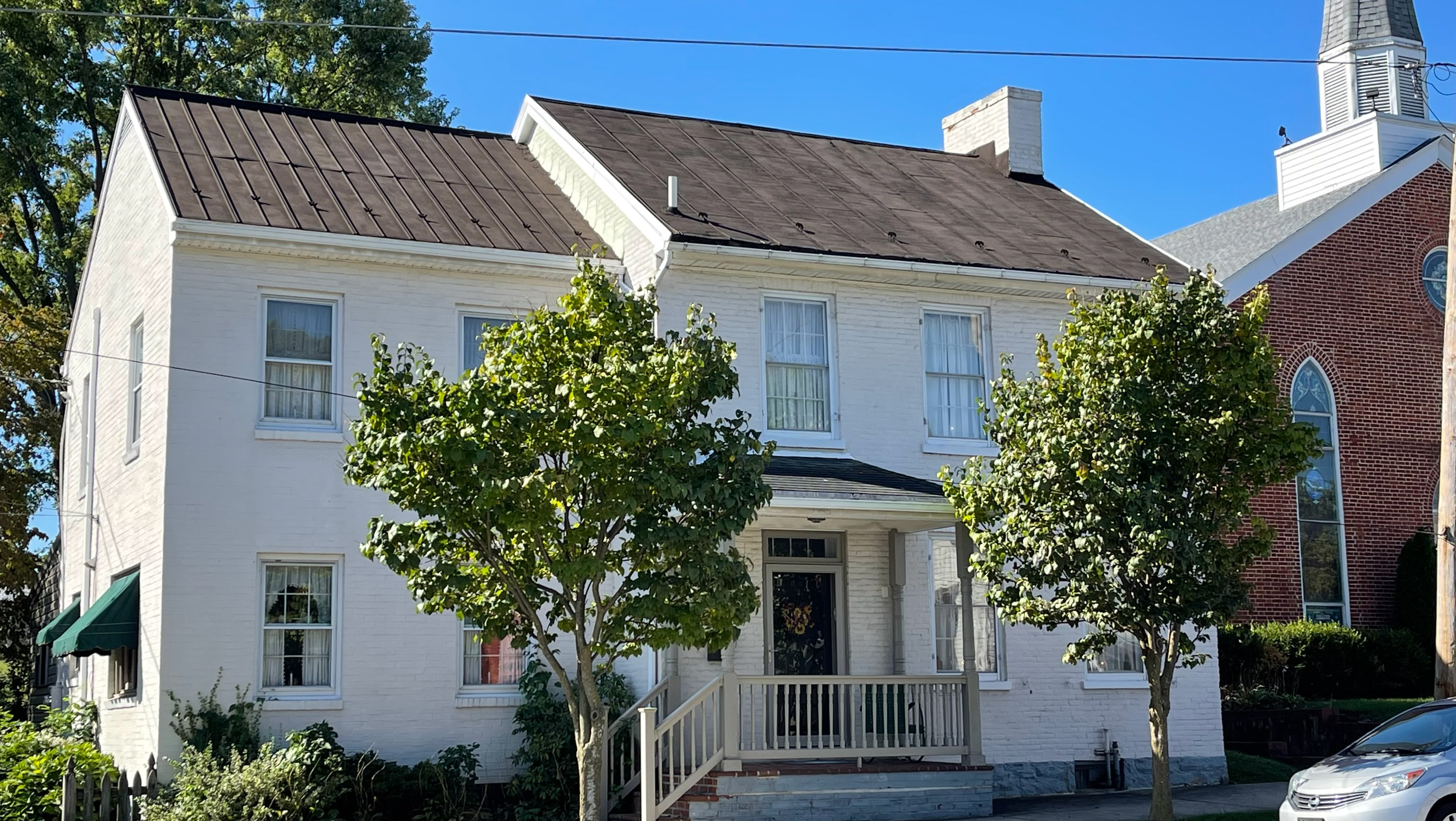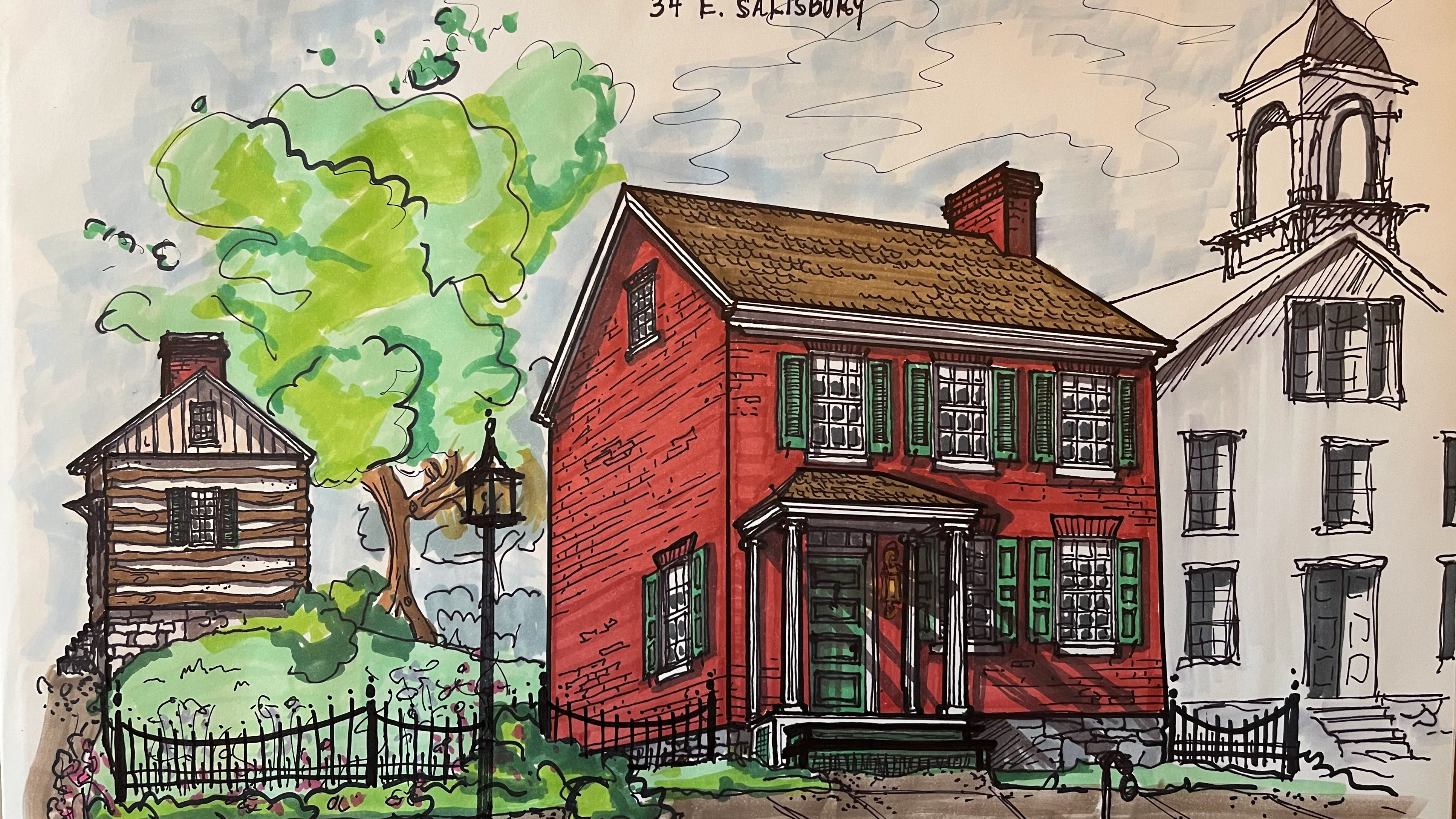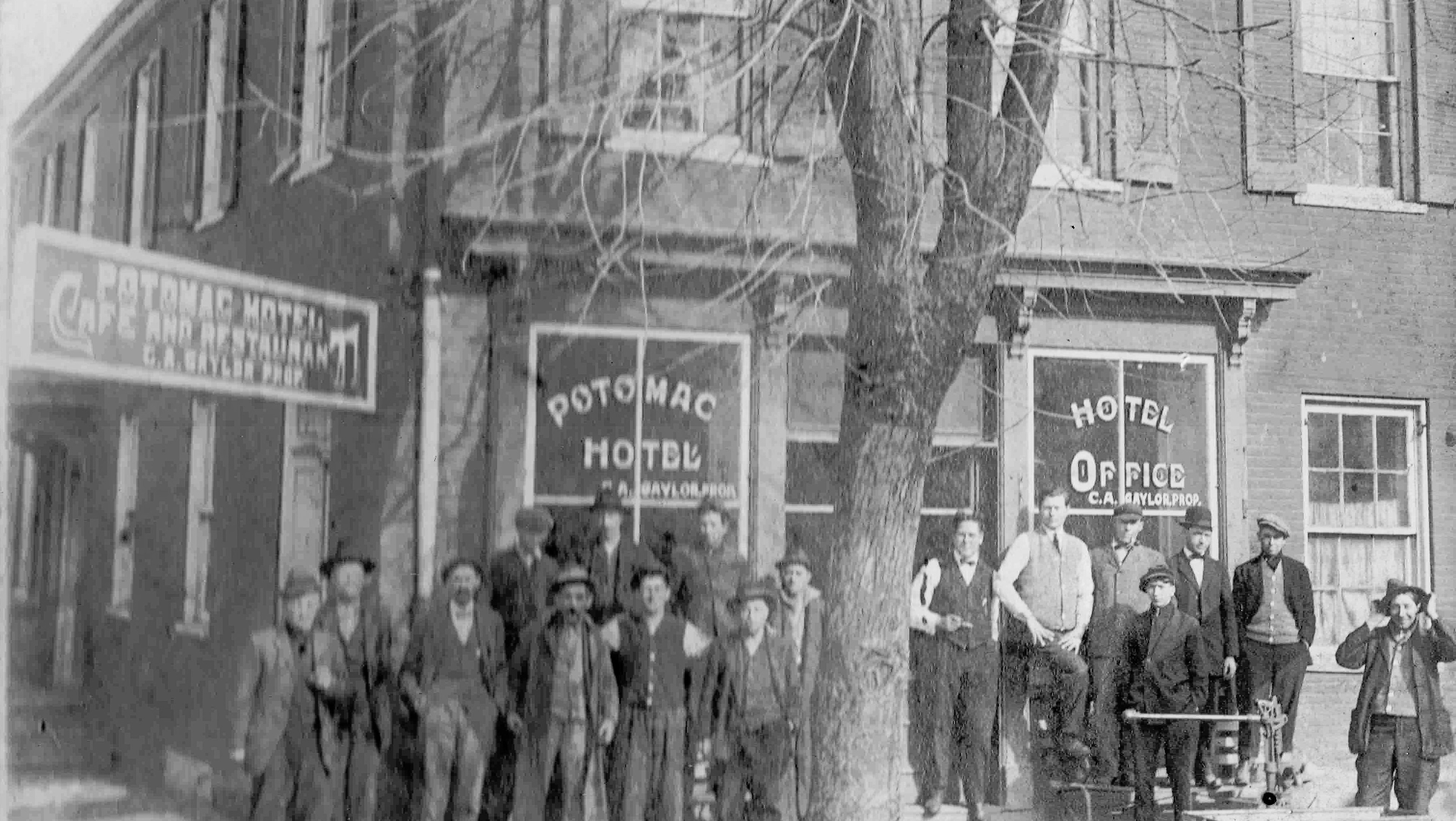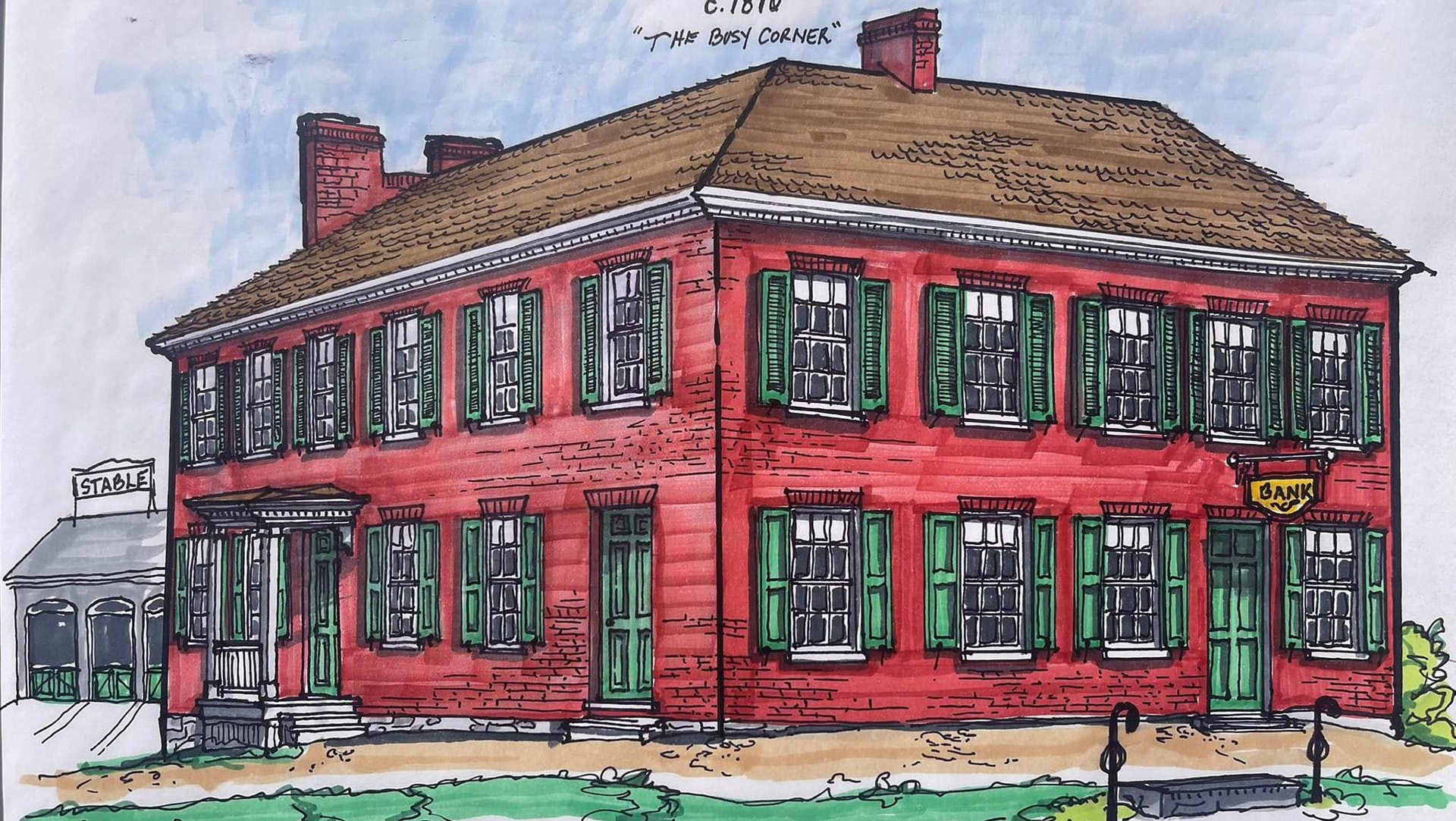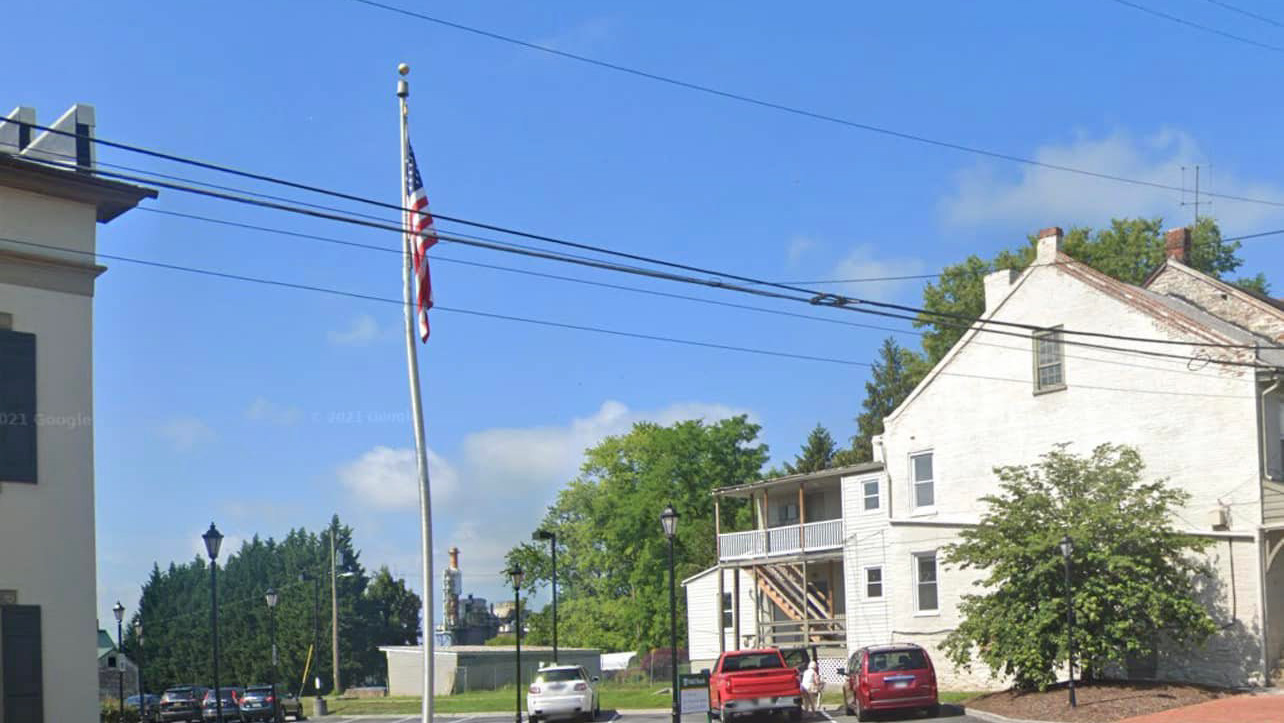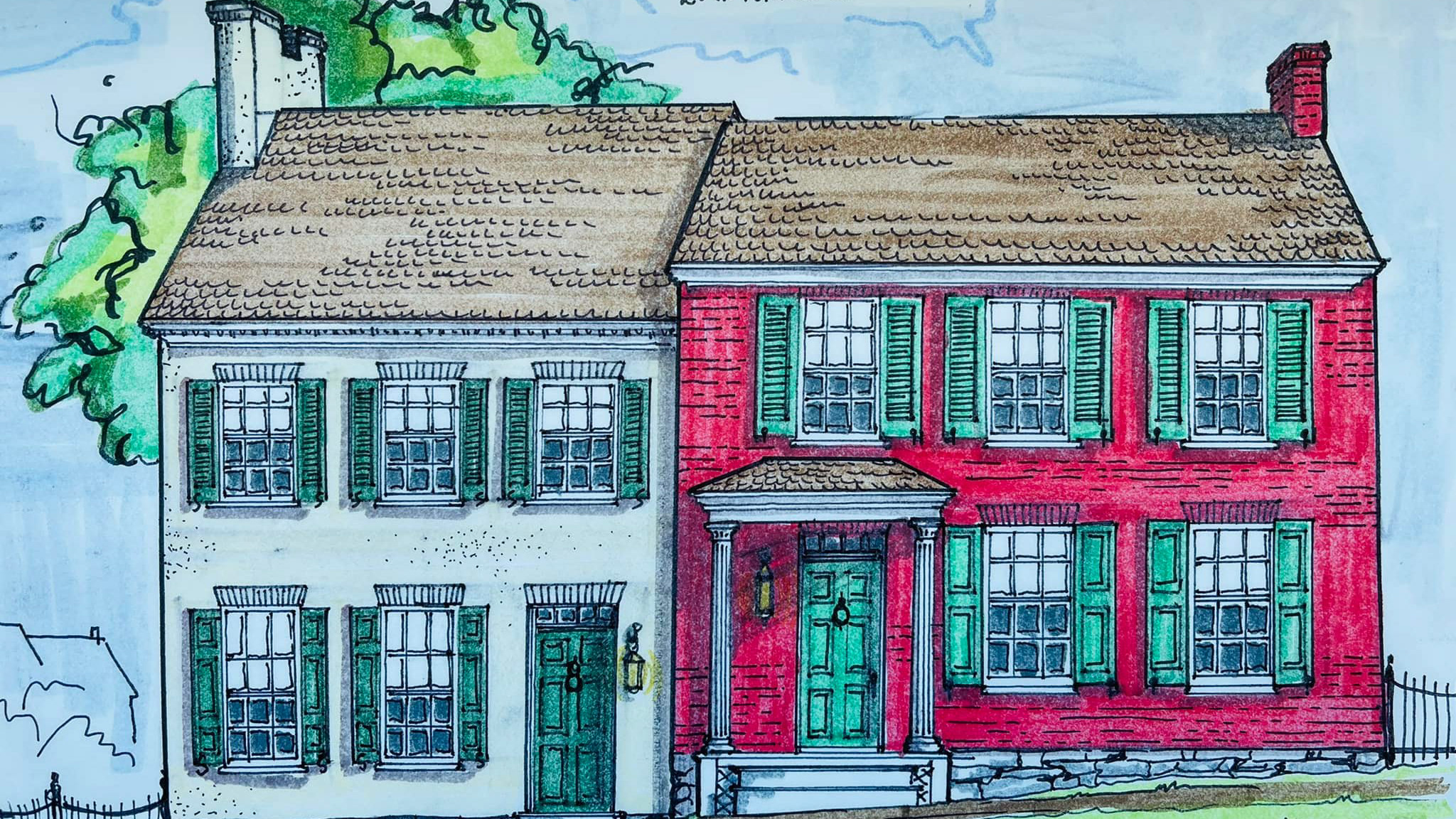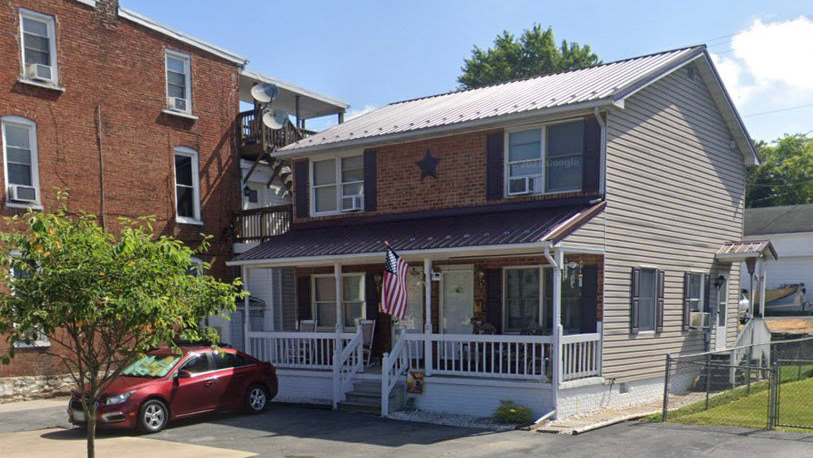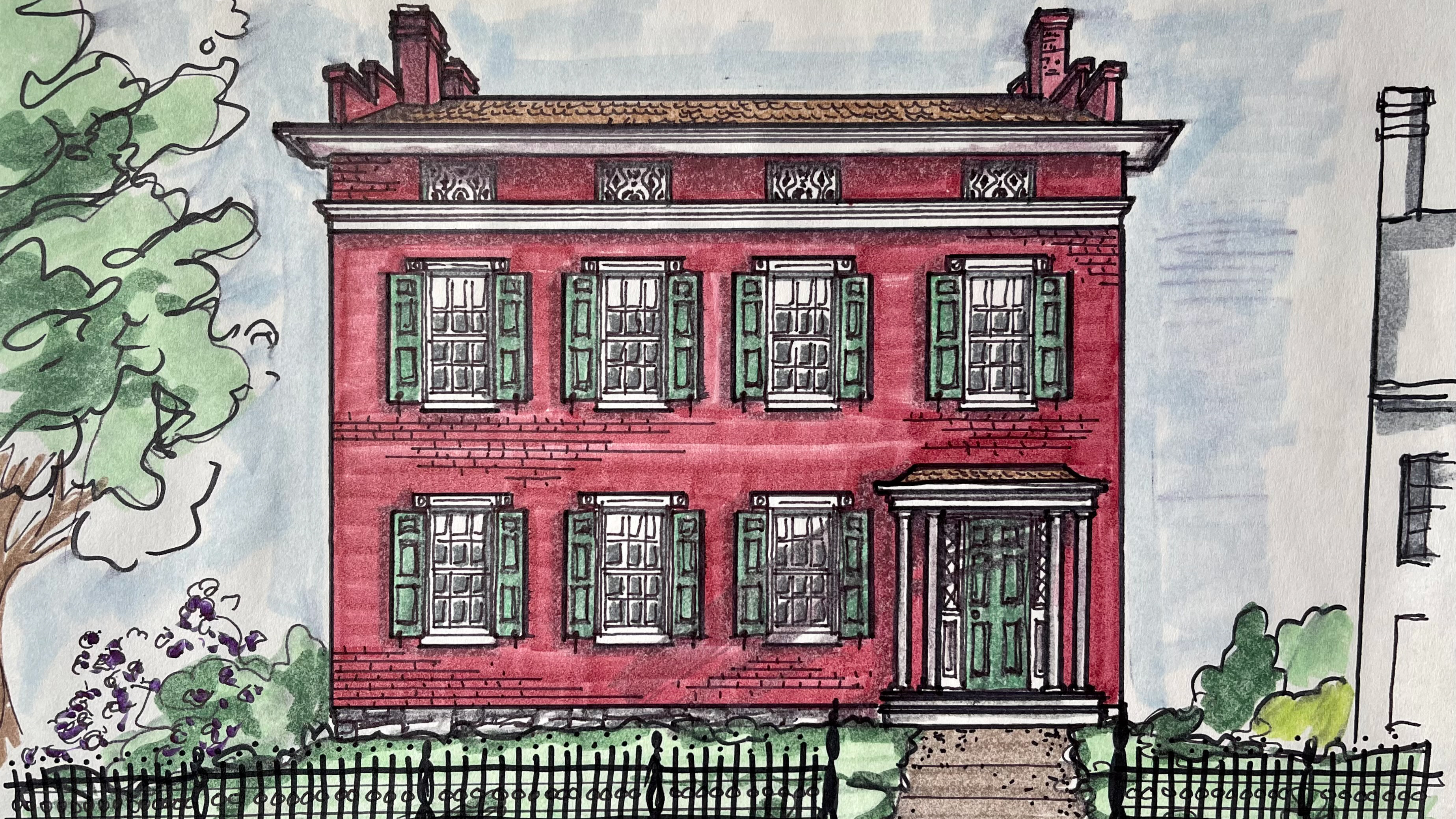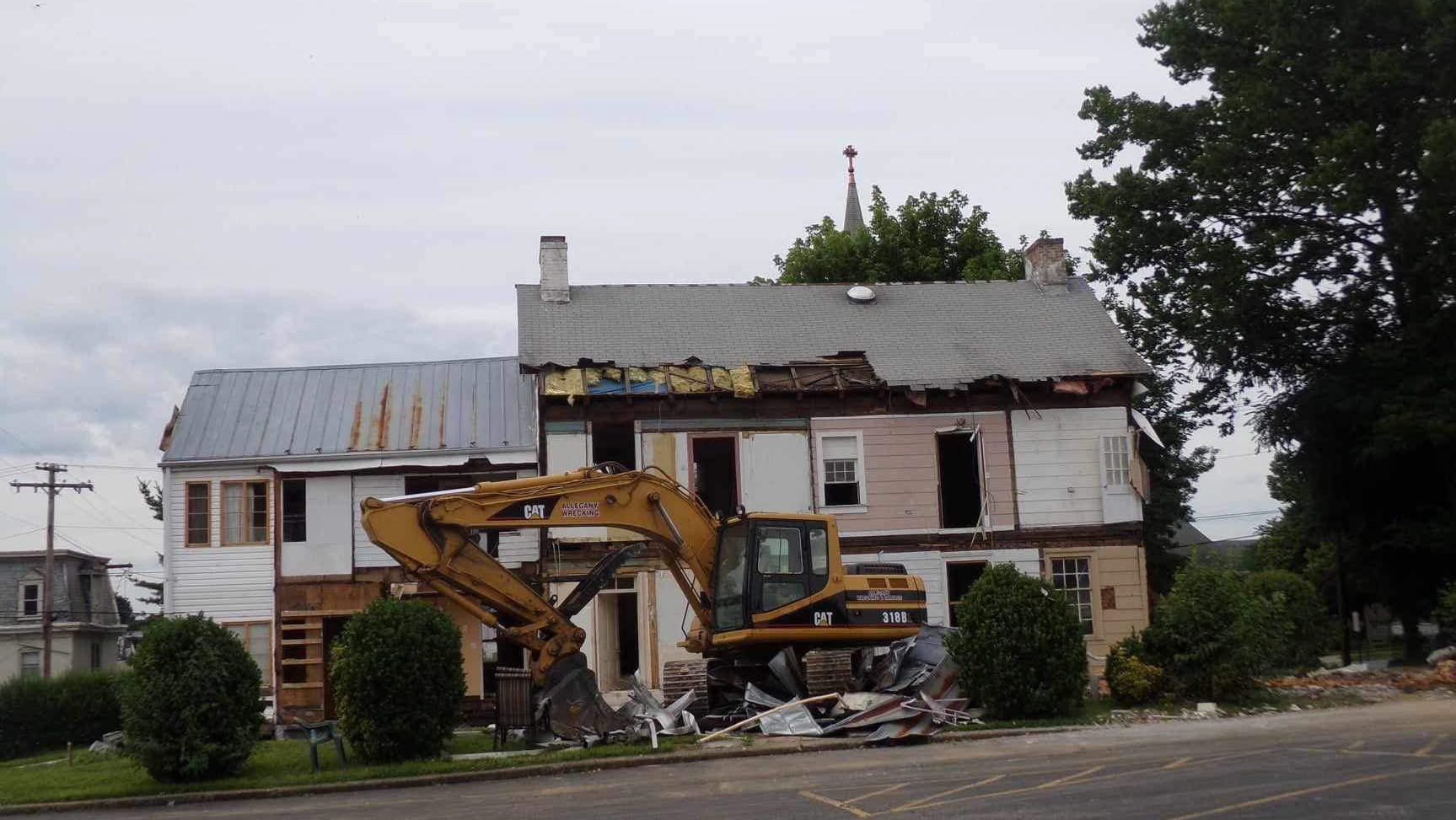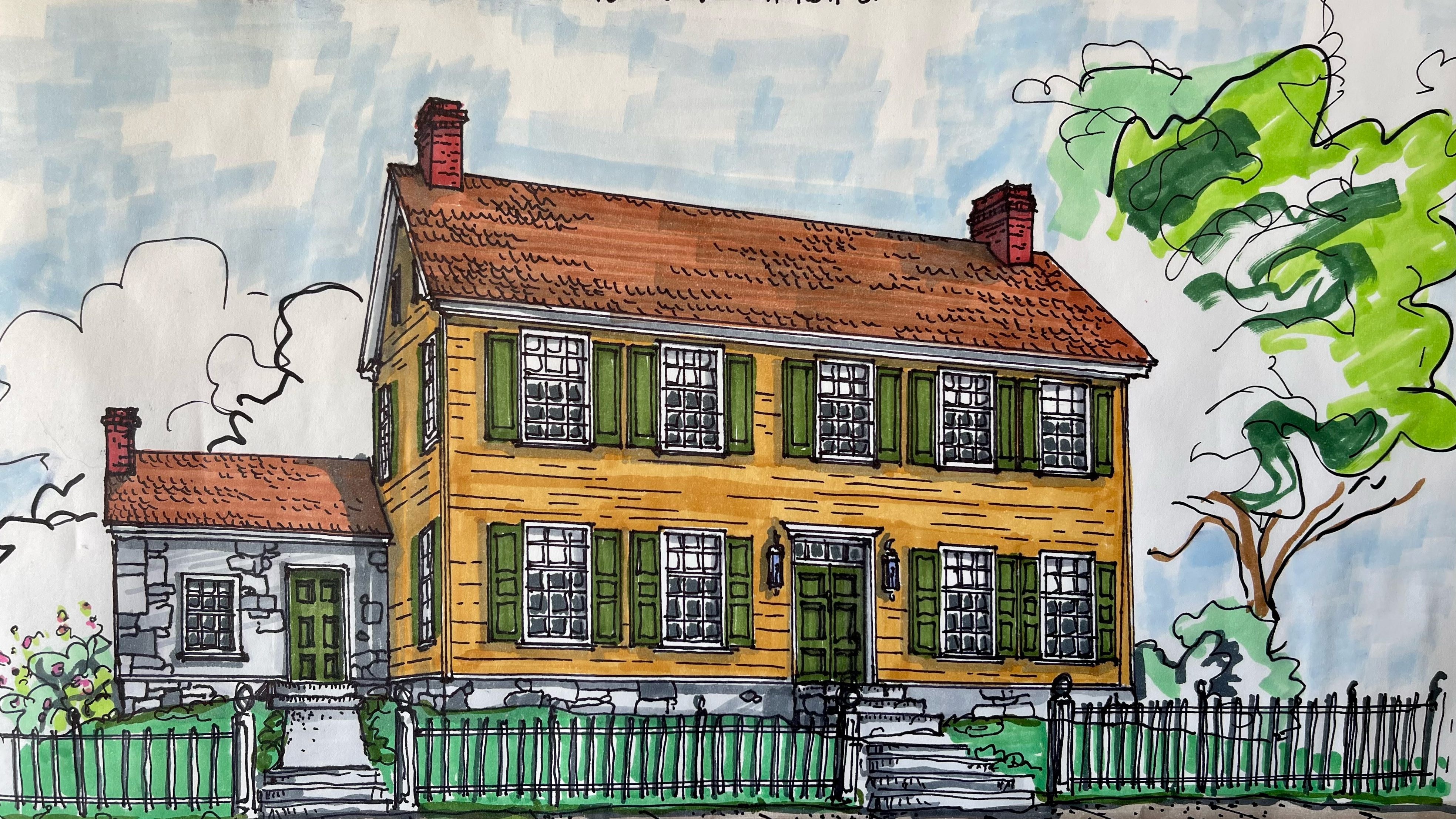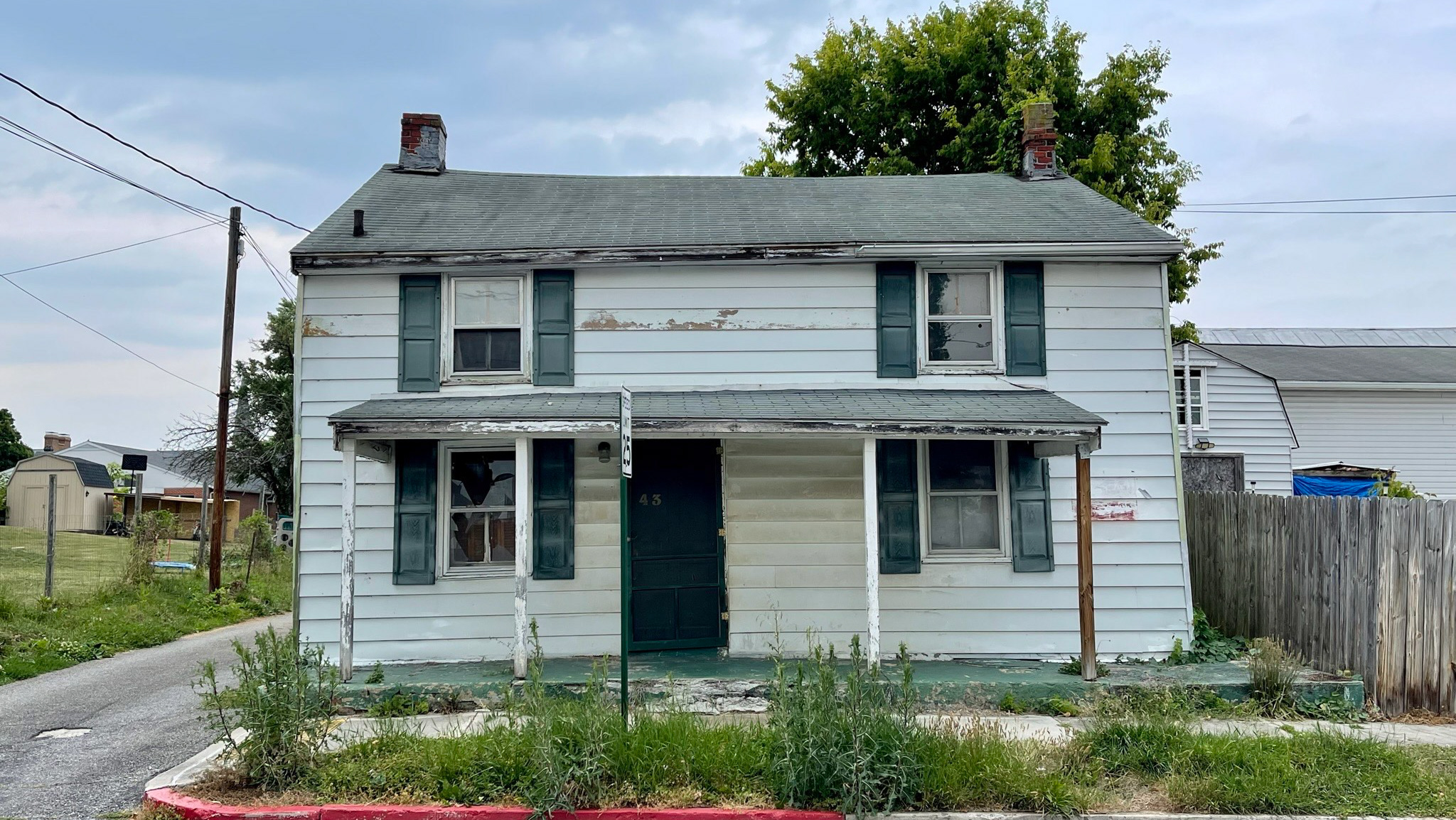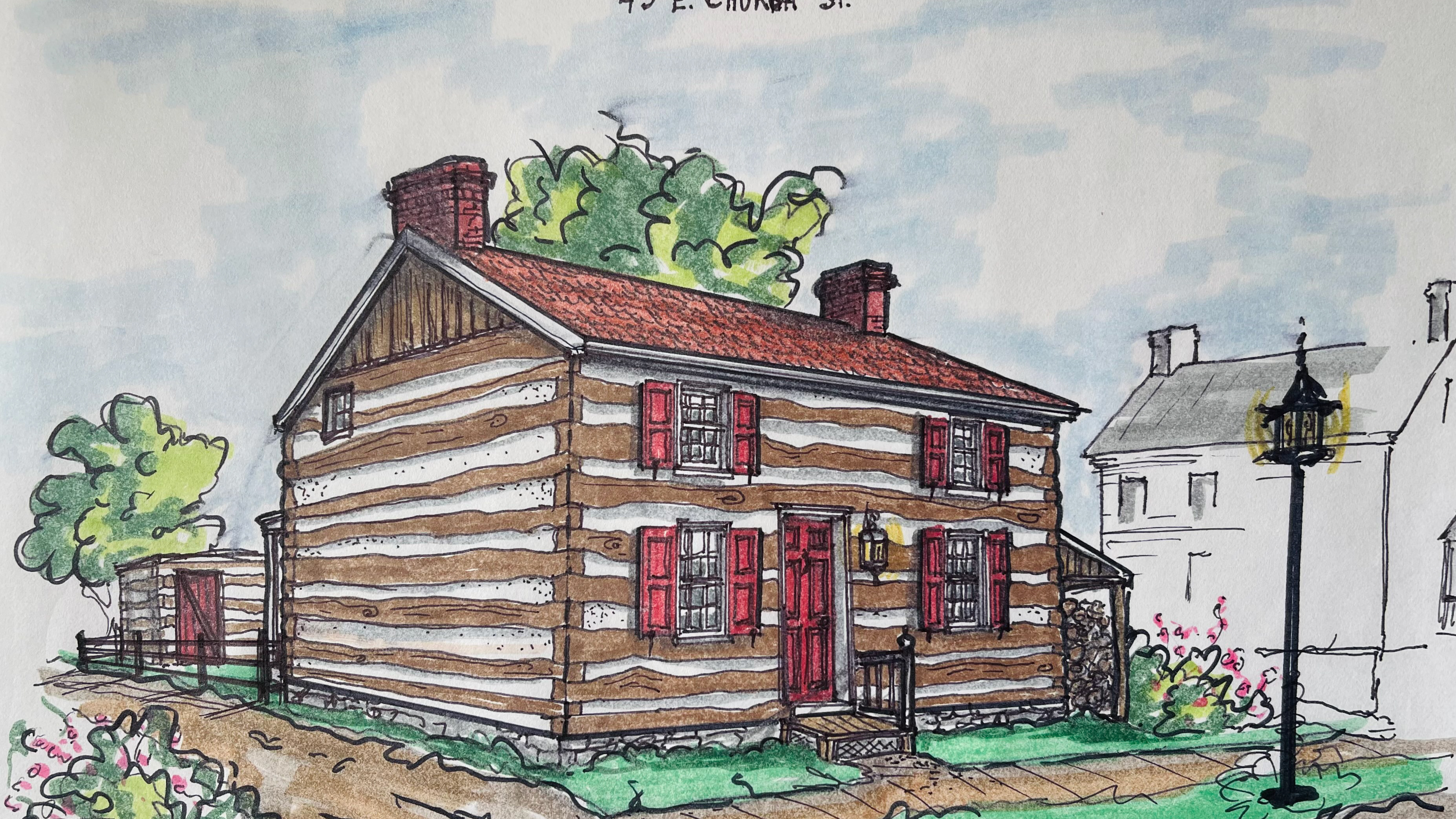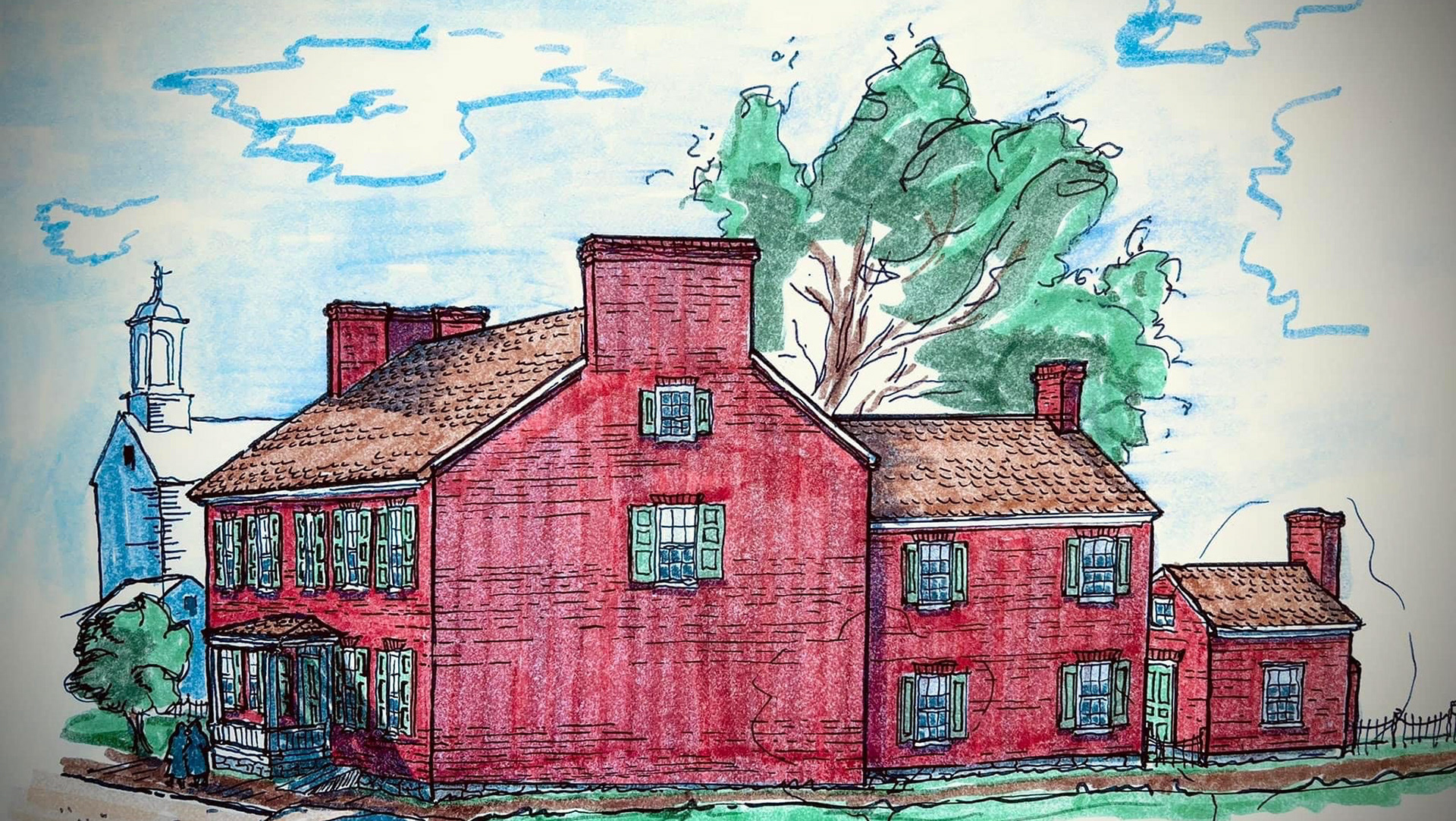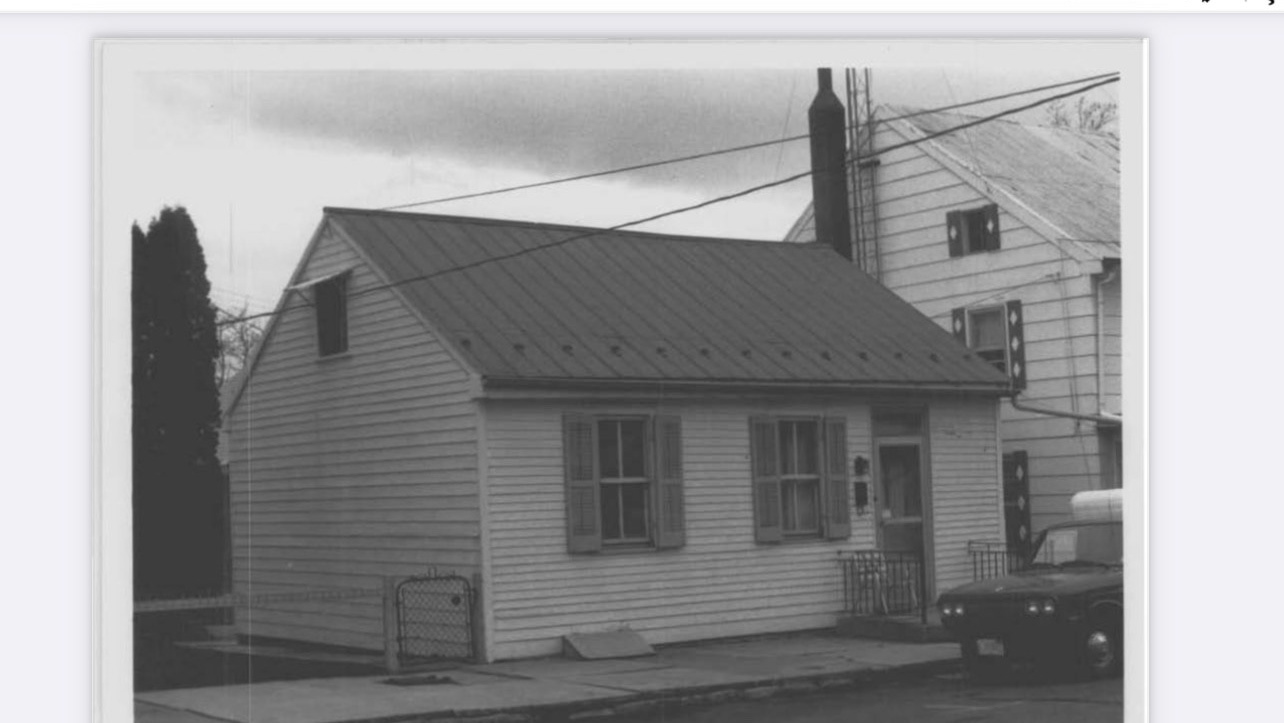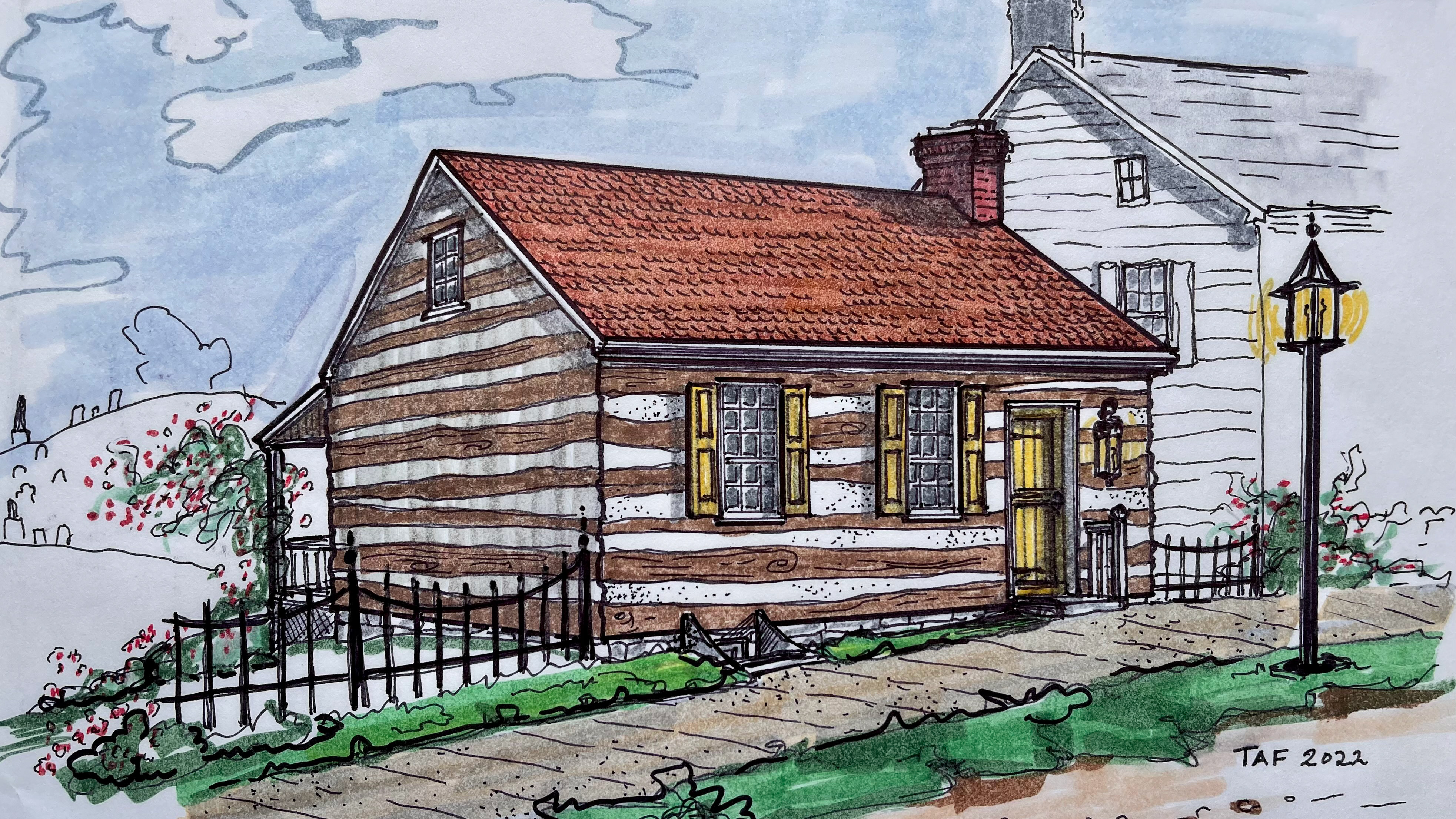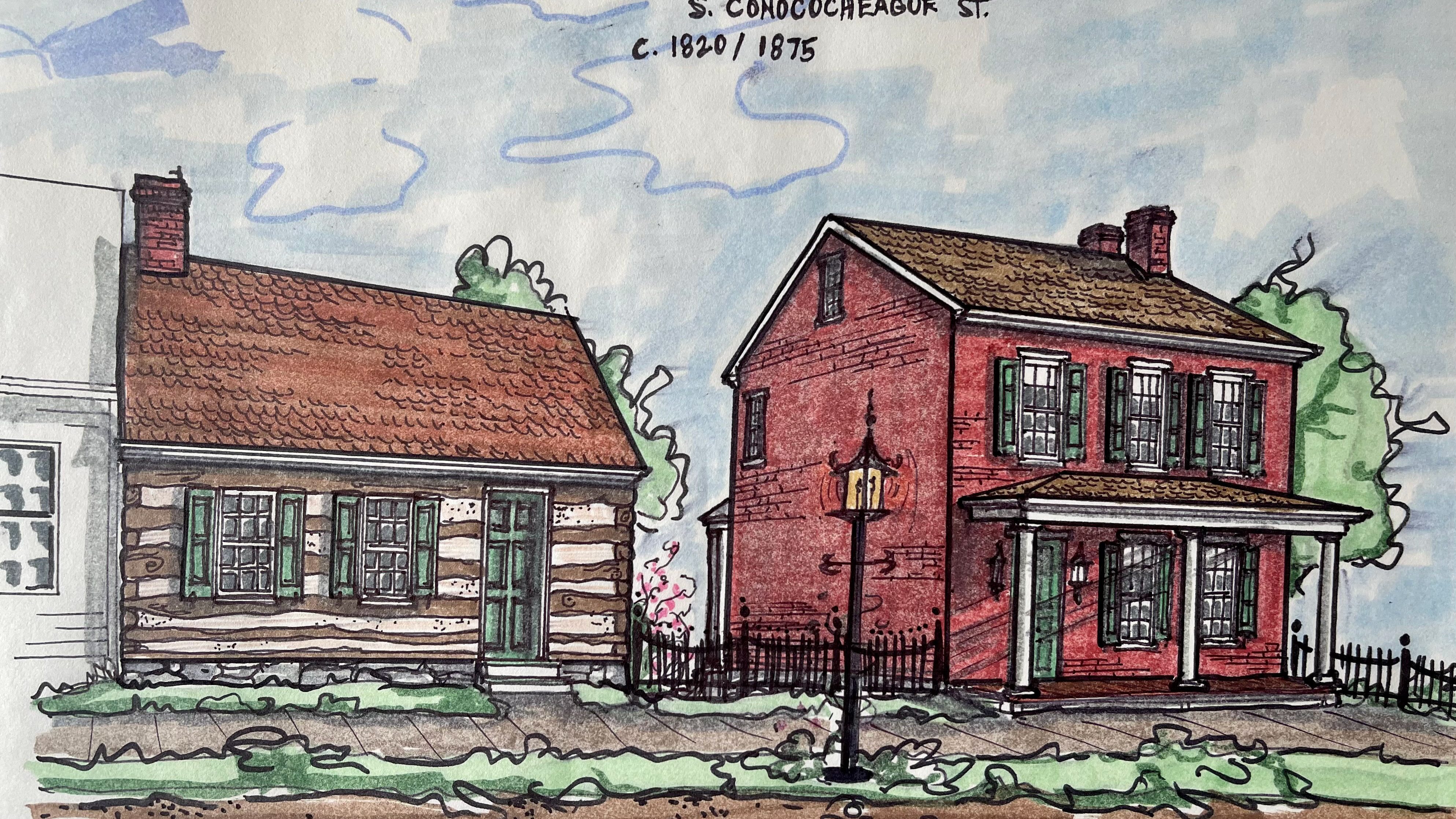The western half of the north side of East Salisbury Street with each house traced back to its build date and original owner, and what the houses would have looked like as a grouping sometime before 1900.
Today
about 1935
East Salisbury Street looking west to the Potomac River. It was down Salisbury Street which a large number of The Confederate Army led by General Lee marched after Gettysburg. They were trapped here for over a week due to flooding.
E. Salisbury Street in the 1926 Armistice Day Parade
Snowstorm about 1986. Note the nice old trees; trees provide shade in the summer, which keeps houses and pedestrians cooler. Trees also provide windbreaks in the winter, keeping homes warmer and helping to prevent wind damage. Is anyone up for planting some trees? Photo courtesy of Deborah Carbaugh-Robinson.
For many years the American Legion Post #202 occupied 15 E. Salisbury. Sadly, the face of the house was covered with a beige brick curtain wall, removing windows in the process. Jacob Boyer built this Federal-style brick house about 1815. Port 44 now owns the property and has plans to restore the building.
19 E Salisbury Street, the 1804 Jacob Boyer Log House. Note the 12 over 8 pane windows were sadly removed in the late 1980s.
21 East Salisbury Street, the lovely, Queen Anne style Strickel House, built in 1893. The home is beautifully cared for today.
23 E Salisbury Street, the Ferran Log house built in 1813. The house remains largely unaltered, except for Victorian windows installed in the late 19th century replacing the paned sashes.
25 E Salisbury Street, the Towson-Crow House, c.1825. This house is now broken up into several apartments.
27 E Salisbury Street, The Martin-Henesy Log House, built in 1799, is probably the oldest home remaining on East Salisbury after the loss of the Orbison-Tritle House next door for a parking lot built in 1797. (Partially pictured on the right)
A vision of Conococheague and Salisbury Streets intersection with stamped brick crosswalks, flowers and green spaces, trees, benches, and signage to help direct visitors to shops, historic sites, and parking. All of these improve tourism, walkability, beautification, and quality of life—original watercolors by Thomas A. Freeman, a talented architect, artist, historian, and resident of Salisbury Street.
Historical research, original art, and photographs by Thomas A. Freeman and Benjamin Tinsley
The Williamsport Area Historical Association would like to thank Thomas A. Freeman and Benjamin Tinsley for their continued dedication to sharing their talent and time in making us aware of our town's historic architectural treasures and the exciting potential of things that could be.
